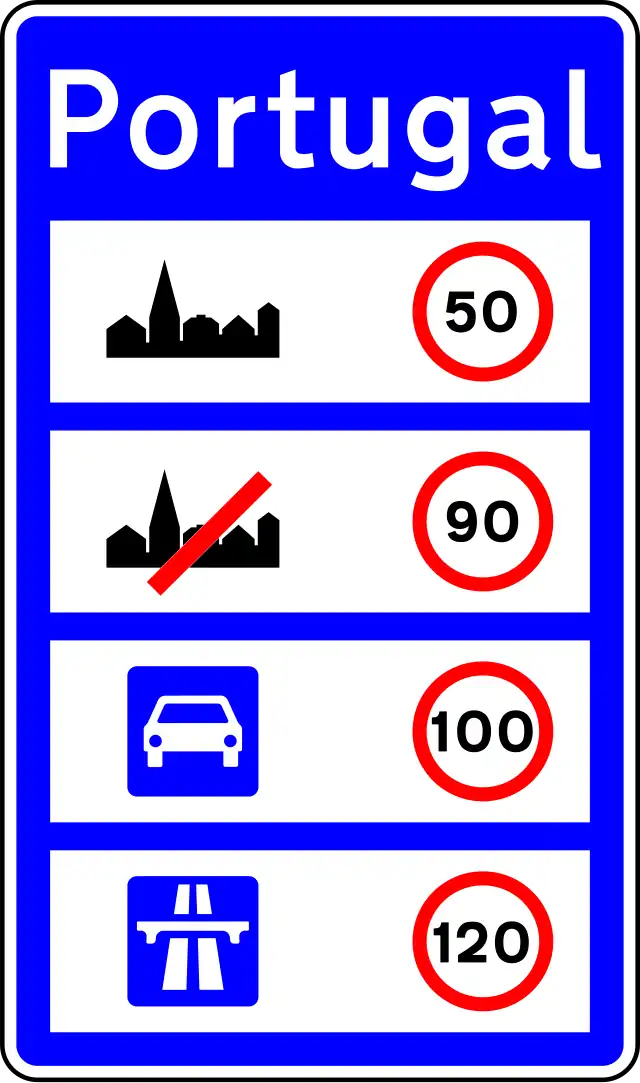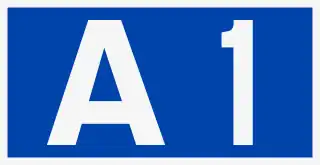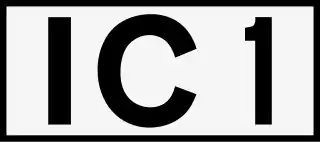Driving in Portugal
driving in the country of Portugal
Although Portugal has a good railway network and extensive coach bus coverage, some travellers prefer to drive through the country. Drivers will encounter a variety of roads, from modern motorways to ramshackle countryside lanes. Many offer breathtaking mountain vistas, oceanside views, or glimpses of field and forests.
Understand
Portuguese traffic culture is very different from that of northern Europe. Driving is fast-paced and at high speeds - drivers should be careful.
Regulations

Speed limits
National speed limits in Portugal may be overridden by signs on certain stretches of road or on city streets. Speed limits are as follows, unless otherwise posted:
- Cities and other "built-up areas": 50 km/h (31 mph)
- Roads outside built-up areas: 90 km/h (56 mph)
- Expressways (non-motorway fast roads): 100 km/h (62 mph)
- Motorways: 120 km/h (75 mph)
Drunk driving
Tolls

Most motorways (autoestradas) and some bridges have tolls. You can pay at a tollbooth on most. Some have electronic tolls only.
For information about electronic-toll-only roads see Portugal Tolls. They have information on signing up for EASYtoll, which is accepted only on highways with electronic tolls only.
Via Verde is an electronic transponder you can use to pay tolls without stopping for tollbooth queues, using the green Via Verde lanes at toll plazas. The tolls are charged to your bank account (Portuguese users) or credit card (international visitors). Via Verde works on all Portuguese motorways, both those with old-school toll plazas and those with electronic tolls only, as well as on 210 km (130 mi) along 16 Spanish motorways.
Fuel
Parking
You can find parking (parque de estacionamento) by looking for white-on-blue "P" signs (🅿️). Some signs indicate Gratuito (free) or Pago (paid). A roof-like chevron shape over the 🅿️ indicates indoor or covered parking. Sometimes the 🅿️ will indicate Livre (available) in green or Completo (full) in red. Some 🅿️ signs mark reserved parking spaces, so be careful if there is an accompanying placard.
Car rental
Roads
Drivers will encounter several classes of roadways in Portugal.
Autoestradas

Autoestradas are equivalent to "freeways", "motorways", or "expressways" in various English-speaking countries. These are controlled-access highways with speed limits of 120 km/h (75 mph). Their markers consist of white lettering on blue rectangles, with designations starting "A". Most autoestradas charge tolls, which can be conventional (tollbooths, with electronic transponder fast lanes) or electronic only.
The table below includes all 44 current and planned motorways. Most motorways form part or all various of itinerários principais (IP) or itinerários complementares (IC), but the autoestrada (A) designation takes precedence on road signs. Some portions are under planning or construction. Others are awaiting upgrade and carry only the IP or IC designation in the meantime.
| No. | Name | End | End | Via | Length | Notes |
|---|---|---|---|---|---|---|
| A1 | Autoestrada do Norte | Lisbon | Porto | Leiria, Coimbra, Aveiro | 303 km | also designated E01 & E80 |
| A2 | Autoestrada do Sul | Lisbon | Albufeira | Almada, Grândola | 240 km | also designated E01 & E90 |
| A3 | Autoestrada de Entre-Douro-e-Minho | Porto | Valença | 112 km | also designated as E01, continues N of Tui as Spain's A-55 | |
| A4 | Autoestrada Transmontana or Autoestrada de Trás-os-Montes e Alto Douro | Matosinhos (N of Porto) | Bragança | Vila Real | 223 km | also designated E82, continues E as Spain's N-122 |
| A5 | Autoestrada da Costa do Estoril | Lisbon | Cascais | Oeiras | 25 km | |
| A6 | Autoestrada do Alentejo Central | Marateca (Palmela) | Caia (Elvas) | Évora | 158 km | also designated E90, continues E from Badajoz as Spain's A-5 |
| A7 | Autoestrada do Douro | Póvoa de Varzim | Vila Pouca de Aguiar | Vila Nova de Famalicão, Guimarães | 104 km | also designated E805 |
| A8 | Autoestrada do Oeste | Lisbon | Leiria | Torres Vedras, Óbidos, Caldas da Rainha | 138 km | |
| A9 | Circular Regional Exterior de Lisboa (CREL) | Oeiras | Alverca (Vila Franca de Xira) | Queluz, Odivelas, Loures | 35 km | |
| A10 | Autoestrada do Ribatejo | Bucelas (Loures) | Benavente | 39 km | ||
| A11 | Autoestrada do Baixo Minho | Apúlia (Esposende) | Castelões (Penafiel) | Barcelos, Braga, Guimarães | 80 km | |
| A12 | Autoestrada do Sul do Tejo | Setúbal | Sacavém (Loures, just outside Lisbon) | Vasco da Gama Bridge, Montijo, Palmela | 41 km | also designated E01 |
| A13 | Autoestrada do Pinhal Interior | Marateca (Palmela) | Coimbra | 149 km | gap between Almeirim and Entroncamento to be built in future | |
| A14 | Autoestrada do Baixo Mondego | Figueira da Foz | Coimbra | Montemor-o-Velho | 40 km | |
| A15 | Autoestrada do Atlântico | Caldas da Rainha / Óbidos | Santarém | Rio Maior | 40 km | |
| A16 | Circular Exterior da Área Metropolitana de Lisboa | Alcabideche (Cascais) | Pontinha (Odivelas) | Sintra | 23 km | |
| A17 | Autoestrada do Litoral Centro | Marinha Grande | Aveiro | Figueira da Foz | 117 km | |
| A18 | Radial da Grande Lisboa | Torres Vedras | Carregado (Alenquer) | 25 km | under construction | |
| A19 | Variante da Batalha | Porto de Mós | Leiria | Batalha | 16 km | |
| A20 | Circular Regional Interior do Porto (CRIP) | Porto | Vila Nova de Gaia | 16 km | ||
| A21 | Autoestrada de Mafra | Venda do Pinheiro (Mafra) | Ericeira (Mafra) | 21 km | ||
| A22 | Via do Infante de Sagres | Lagos | Castro Marim | Faro | 133 km | also designated E01, continues E from Ayamonte as Spain's A-49 |
| A23 | Autoestrada da Beira Interior | Torres Novas | Guarda | Abrantes, Castelo Branco, Covilhã | 217 km | |
| A24 | Autoestrada do Interior Norte | Viseu | Chaves | Lamego, Peso da Régua | 162 km | also designated E801, continues N as Spain's A-75 |
| A25 | Autoestrada das Beiras Litoral e Alta | Ílhavo | Vilar Formoso (Almeida) | Aveiro, Viseu, Guarda | 199 km | also designated E80 & E802, continues E from Fuentes de Oñoro as Spain's A-62 |
| A26 | Autoestrada do Baixo Alentejo | Sines | Beja | Santiago do Cacém, Ferreira do Alentejo | 22 km (100 km) | multiple stretches under construction |
| A27 | Autoestrada do Vale do Lima | Viana do Castelo | Ponte de Lima | 24 km | ||
| A28 | Autoestrada do Litoral Norte | Porto | Caminha | Matosinhos, Póvoa de Varzim, Viana do Castelo | 93 km (123 km) | extension to Valença planned |
| A29 | Autoestrada da Costa da Prata | Albergaria-a-Velha | Vila Nova de Gaia | Ovar, Espinho | 53 km | |
| A30 | Autoestrada do Estuário do Tejo | Sacavém (Loures) | Santa Iria da Azóia (Loures) | 10 km | designated IC2, A30 designation pending road upgrade | |
| A31 | Variante a Coimbra | Coimbra | Coimbra | 11 km | designated IC2, A31 designation pending road upgrade | |
| A32 | Autoestrada de Entre-Douro-e-Vouga | Oliveira de Azeméis | Vila Nova de Gaia | São João da Madeira | 34 km | |
| A33 | Circular Regional Interior da Península de Setúbal (CRIPS) | Monte da Caparica (Almada) | Montijo | 37 km | ||
| A34 | Autoestrada de Pombal | Pombal | Pombal | 5 km | designated IC8, A34 designation pending road upgrade | |
| A35 | Autoestrada da Beira Alta | Mira | Mangualde | Santa Comba Dão, Nelas | 21 km (94 km) | majority yet to be built, designated IC12 in meantime |
| A36 | Circular Regional Interior de Lisboa (CRIL) | Algés (Oeiras) | Sacavém (Loures) | 21 km | designated IC17, A36 designation pending road upgrade | |
| A37 | Radial de Sintra | Lisbon | Sintra | Amadora, Queluz | 16 km | designated IC19, A37 designation pending road upgrade |
| A38 | Via Rápida da Caparica | Cova da Piedade (Almada) | Costa da Caparica (Almada) | 6 km | designated IC20, A38 designation pending road upgrade | |
| A39 | Via Rápida do Barreiro | Coina (Barreiro) | Lavradio (Barreiro) | 9 km | designated IC21, A39 designation pending road upgrade | |
| A40 | Radial de Odivelas | Olival Basto (Odivelas) | Santo António dos Cavaleiros (Loures) | 4 km | designated IC22, A40 designation pending road upgrade | |
| A41 | Circular Regional Exterior do Porto (CREP) | Perafita (Matosinhos) | Anta (Espinho) | 62 km | ||
| A42 | Autoestrada do Douro Litoral | Sobrado (Valongo) | Várzea (Felgueiras) | 30 km | ||
| A43 | Radial de Gondomar | Porto | Gondomar | 16 km | ||
| A44 | Autoestrada de Vila Nova de Gaia | Gulpilhares (Vila Nova de Gaia) | Oliveira do Douro (Vila Nova de Gaia) | 9 km |
Itinerários principais
Itinerários principais are "principal" or "main" routes. Their markers consist of white lettering on red rectangles with designations starting "IP". IPs often overlap autoestradas, in which case the "A" designation is used on road signs.
| No. | Route | Length | Notes |
|---|---|---|---|
| IP1 | Valença - Braga - Porto - Vila Nova de Gaia - Lisbon - Vasco da Gama Bridge - Palmela - Tunes - Castro Marim | 734 km | Concurrent with all or part of (N to S): A3, A20, A1, A12, A2, A22; continues N from Tui as Spain's A-55; continues E from Ayamonte as Spain's A-49 |
| IP2 | Bragança - Guarda - Castelo Branco - Portalegre - Évora - Beja - Faro | 564 km | Concurrent with all or part of (N to S): A4, A25, A23, A6, A2, A22 |
| IP3 | Chaves - Viseu - Coimbra - Figueira da Foz | 279 km | Concurrent with all or part of (N to S): E801, A24, A14; continues north as Spain's A-75 |
| IP4 | Matosinhos (N of Porto) - Vila Real - Bragança | 42 km (222 km) | Concurrent with A4, E82; continues E as Spain's N-122 |
| IP5 | Aveiro - Viseu - Guarda - Vilar Formoso (Almeida) | 199 km | Concurrent with A25, E80; continues E from Fuentes de Oñoro as Spain's A-62 |
| IP6 | Peniche - Óbidos - Santarém - Castelo Branco | 219 km | Concurrent with all or part of (W to E): A8, A15, A1, A23 |
| IP7 | Loures - Lisbon - 25 de Abril Bridge - Setúbal - Évora - Elvas | 225 km | Concurrent with all or part of (W to E): A2, A6 E90; continues E from Badajoz as Spain's A-5 |
| IP8 | Sines - Serpa | 3 km (157 km) | Mostly under construction or planning |
| IP9 | Viana do Castelo - Ponte de Lima - Braga - Vila Real | 161 km | Concurrent with all or part of (W to E): A27, A3, A11, A4 |
Itinerários complementares

Itinerários complementares are "complementary" or "secondary" routes. Their signs have black lettering on white rectangles with designations starting "IC". ICs often overlap autoestradas, in which case the "A" designation is used on road signs.
Estradas nacionais
Estradas nacionais are non-motorway national roads, some in better condition than others. They are identified with black on white markers starting with "N" or "EN" (depending on the sign's age). Many older stone or concrete markers still exist. Many former national roads are decommissioned. Some have been redesignated as regional or municipal roads. Others still have obsolete signage or are at least referenced by their former numbers by locals.
Estradas regionais
Estradas regionais are regional roads. Their markers are black on white starting with "R" or "ER".
Estradas municipais
Estradas municipais are municipal roads. Their numbers begin "M" or "EM", and they are often unmarked but may be found in online maps and in map apps.
Estradas Europeias
Estradas Europeias are international European highways, connecting with Spain and countries beyond. Their route markers have white lettering on green rectangles with designations beginning "E". Signage is sometimes absent when the routes are concurrent with Portuguese highways.
| No. | Itinerary | Length* |
|---|---|---|
| E01 | Ireland - Spain (... Vigo) - Braga - Porto - Coimbra - Santarém - Lisbon - Setúbal - Faro - Spain (Huelva ...) | 1,460 km |
| E80 | Lisbon - Coimbra - Aveiro - Viseu - Guarda - Spain (Salamanca ...) - France - Italy - Croatia - Montenegro - Kosovo - Serbia - Bulgaria - Turkey | 5,600 km |
| E82 | Porto - Vila Real - Bragança - Spain (Zamora ...) | 380 km |
| E90 | Lisbon - Setúbal - Évora - Elvas - Spain (Badajoz ...) - Italy - Greece - Turkey | 4,770 km |
| E801 | Coimbra - Viseu - Vila Real - Chaves - Spain (Verín) | 257 km |
| E802 | Ourique - Beja - Évora - Portalegre - Guarda - Macedo de Cavaleiros | 586 km |
| E805 | Póvoa de Varzim - Vila Nova de Famalicão - Guimarães - Vila Pouca de Aguiar | 102 km |
| E806 | Torres Novas - Abrantes - Nisa | 78 km |
* Total length, including portions outside Portugal
Road signs
Road signs in Portugal adhere to the 1968 Vienna Convention on Road Signs and Signals, largely matching those in most other European countries and much of Asia, but differing from those elsewhere. Most signs consist of pictograms only, without words.
 Danger: low visibility
Danger: low visibility Prohibition: no overtaking by motorcycles or mopeds
Prohibition: no overtaking by motorcycles or mopeds Mandatory: snow chains required
Mandatory: snow chains required Information: hospital
Information: hospital Information: hospital with full-time emergency
Information: hospital with full-time emergency Leaving named built-up area
Leaving named built-up area Via Verde toll road
Via Verde toll road